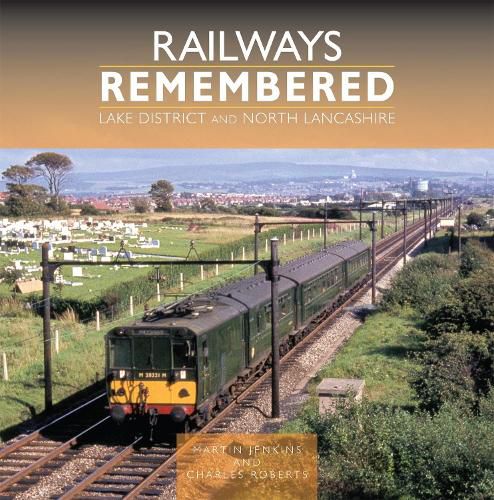Readings Newsletter
Become a Readings Member to make your shopping experience even easier.
Sign in or sign up for free!
You’re not far away from qualifying for FREE standard shipping within Australia
You’ve qualified for FREE standard shipping within Australia
The cart is loading…






The railways of the Lake District and North Lancashire are characterised by massive contrasts. From north to south, the area is intersected by the West Coast Main Line. Its series of tough grades, including the legendary Shap, presented a challenge for steam locomotives and crews for decades, and also for photographers seeking out new locations to record them at work. Along the way, the major centres of Carlisle, Lancaster and Preston were hives of activity, dealing with all manner of traffic from elsewhere in the country. It was also possible to see a rich variety of motive power at stations and loco sheds.
The spectacular Cumbrian Coast line conveyed trains via remote and dramatic scenery bordering the Irish Sea while linking industrial towns built around coal and steel. Branch lines to places like Silloth, Coniston, Windermere and Lakeside tapped into a growing tourist market until most were usurped by the private car as ownership grew. Stations at Blackpool proved a magnet for holidaymakers and day-trippers whilst Morecambe was served by an intriguing early electric service. The corridor connecting Preston to Blackburn, Burnley and beyond relied on a variety of passenger and goods traffic, especially coal. It was also notable for being the last major outpost of BR steam in 1968.
All these aspects feature in this new colour album, covering the period from the 1950s to the late 1970s, largely based around previously unpublished images, many of which are held by Online Transport Archive. Mainline and branch views cover freight and passenger workings in the steam, diesel and early electric eras. These are complemented by some remarkable views of industrial operations with a fascinating mix of locomotives in a range of locations. Another wonderfully nostalgic book to complement previous titles in the Railways Remembered series.
$9.00 standard shipping within Australia
FREE standard shipping within Australia for orders over $100.00
Express & International shipping calculated at checkout
The railways of the Lake District and North Lancashire are characterised by massive contrasts. From north to south, the area is intersected by the West Coast Main Line. Its series of tough grades, including the legendary Shap, presented a challenge for steam locomotives and crews for decades, and also for photographers seeking out new locations to record them at work. Along the way, the major centres of Carlisle, Lancaster and Preston were hives of activity, dealing with all manner of traffic from elsewhere in the country. It was also possible to see a rich variety of motive power at stations and loco sheds.
The spectacular Cumbrian Coast line conveyed trains via remote and dramatic scenery bordering the Irish Sea while linking industrial towns built around coal and steel. Branch lines to places like Silloth, Coniston, Windermere and Lakeside tapped into a growing tourist market until most were usurped by the private car as ownership grew. Stations at Blackpool proved a magnet for holidaymakers and day-trippers whilst Morecambe was served by an intriguing early electric service. The corridor connecting Preston to Blackburn, Burnley and beyond relied on a variety of passenger and goods traffic, especially coal. It was also notable for being the last major outpost of BR steam in 1968.
All these aspects feature in this new colour album, covering the period from the 1950s to the late 1970s, largely based around previously unpublished images, many of which are held by Online Transport Archive. Mainline and branch views cover freight and passenger workings in the steam, diesel and early electric eras. These are complemented by some remarkable views of industrial operations with a fascinating mix of locomotives in a range of locations. Another wonderfully nostalgic book to complement previous titles in the Railways Remembered series.